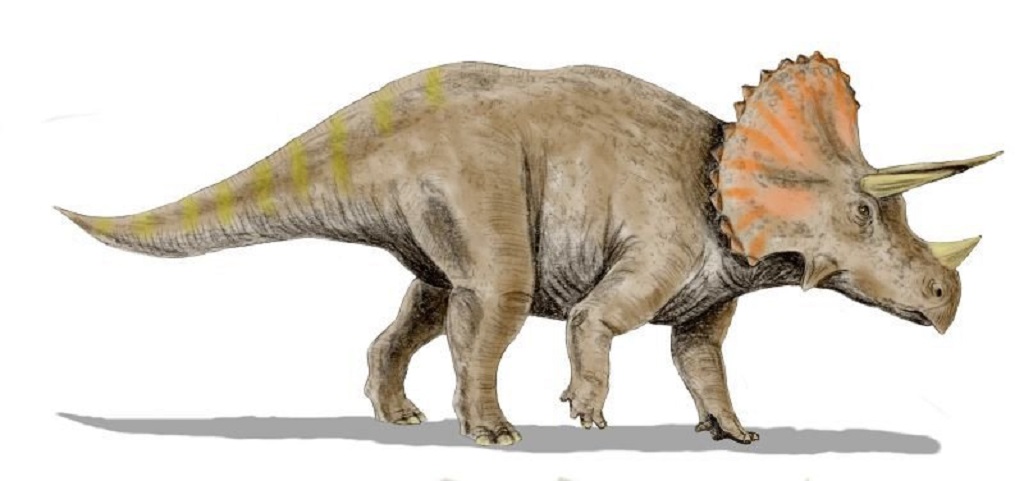The amazing world of dinosaurs hides an endless number of striking species, biological adaptations, and also the development of different groups according to their feeding strategies. One of these most numerous groups is undoubtedly that of the herbivorous dinosaurs of the Jurassic, which devoured all kinds of leaves and plants that existed throughout the Mesozoic era. Thanks to the numerous and diverse studies of dinosaur remain that paleontology has carried out throughout history, today we can know in detail many of the species names and characteristics of herbivorous dinosaurs.
In this interesting article, you will discover all the information you need to learn more about the amazing world of herbivorous dinosaurs: names, types, and characteristics.
Characteristics of herbivorous dinosaurs and when they existed
Herbivorous dinosaurs needed to have a certain anatomical structure that would allow them to defend themselves against their fearsome carnivorous predators. In the following list we will see many of the main characteristics of herbivorous dinosaurs:
- The dimensions: they were heavy and corpulent, with weights that varied according to species, from 0.5 tons to a staggering 123 tons. Due to their dimensions, they were not very agile or fast, in contrast to the fearsome carnivorous dinosaurs.
- The anatomical structure of the neck: the structure of this part of the body of herbivorous dinosaurs was adapted for the optimal range of the plants and vegetables on which they fed.
- The teeth: they were not very pointed and with large surfaces, adapted to be able to tear, crush, and digest the leaves. Their jaws were not able to move laterally to chew more effectively so they normally had to swallow whole leaves to later digest them in the stomach.
- The stomach: it was large and presented characteristics that facilitated the intake. And processing of up to 200 kilograms of nutritious plant resources per day. For greater ease in the processing of plant nutrients, they swallowed small stones as gastroliths.
When Dinosaurs Existed: Mesozoic Era
Dinosaurs existed during the Mesozoic, Mesozoic, or Secondary Era, which is commonly known as ” The Age of Dinosaurs “since the presence of these incredible animals is the most remarkable event of that period in the history of life in the earth. Thus, the extensive “Age of Dinosaurs” includes much of the Mesozoic, as well as the entire Cenozoic or Tertiary Era.
If you want to learn more about it, you can read this other post in which we talk about various theories about why the dinosaurs became extinct.
What did herbivorous dinosaurs eat?
As we can well imagine, herbivorous dinosaurs based their diet on plant-based nutrients, mainly from the leaves of trees, shrubs and grassland vegetation that flooded the fertile lands of the Age of Dinosaurs with greenery.
According to the structure of their teeth and jaws, as well as the length of their necks or the presence of beaks and other anatomical structures related to food, herbivorous dinosaurs were capable of feeding on young shoots, ferns, and tree leaves. as well as somewhat more hardened plant resources such as fruits, pineapples or needle leaves of the amazing variety of plants existing at that time.
Types of herbivorous dinosaurs
The different types of herbivorous dinosaurs that existed were mostly terrestrial animals that lived in herds. Although some species preferred to live alone, occupying the extensive continental ecosystems. When it comes to grouping the great variety of species of herbivorous dinosaurs that existed. We can distinguish two main types:
- Herbivorous sauropods: they moved quadruped, that is, on their four limbs. And had hips similar to those of lizards, as well as long necks and vast columnar structures. The molar parts of the sauropods were adapted to tear off the leaves and ingest them without being able to chew them efficiently.
- Herbivorous ornichistios: their hips resembled those of birds, thus being able to move on their two hind limbs. Some species of this group had jaws and chewing structures in the shape of a bird’s beak. As well as scissor-shaped teeth, which allowed them both to extract the leaves. And fruits with precision and to crush them prior to their digestion.
Herbivorous Dinosaur Names – List of Examples
Thanks to paleontology, we can now know the main characteristics of herbivorous dinosaurs. That’s right, thanks to the numerous and varied records of bones, footprints, and even eggs, of herbivorous dinosaurs. Today we can know various anatomical and biological aspects of these fascinating animals. Here is a list of examples of herbivorous dinosaur names:
- Apatosaurus
- Ankylosaurus
- Brachiosaurus
- Brontosaurus
- Camarasaurus
- Cetiosaurus
- Dicraeosaurus
- Diplodocus
- Gigantspinosaurus
- Lusotitan
- Mamenchisaurus
- Spinophorosaurus
- Stegosaurus
- Pachycephalosaurus
- Patagotitan mayorum
- Parasaurolophus
- Protoceratops
- Psittacosaurus
- Triceratops

